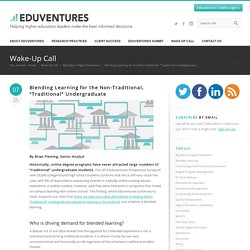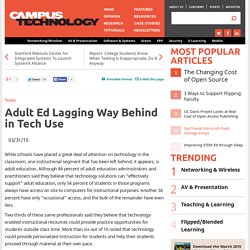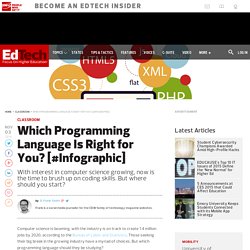

Accessibility + UD. CPS. Visual Literacy and eLearning. VR/AR. Flipping Classes. ID Models + Online Learning. Rubrics. Video Tech. Design Tips. Student to Student Interaction. Bloom's Taxonomy. Vendors of Instructional Content. Active Learning Techniques. Gamification. ADA & 505C compliance. Badges. Hardware Advances. Learning Spaces. Teaching Teachers. Scenario based learning. Behind the (Not So) Hidden EdTech Agenda. By Brian Fleming, Senior Analyst Events like the ASU+GSV Summit remind us that edtech is no longer a “wild west” of fringe ideas, disruptive innovations, and nice-to-have solutions.

A large and growing number of companies are taking aim at the very heart of higher education by uprooting and reshaping the single unifying principle that holds this industry together: curriculum. Quite simply, they are reimagining what is taught, how it is taught, and why it is taught. Having spoken with dozens of these companies over the course of this conference, it is clear that curricular transformation is unmistakably the driving force behind their agenda.
Take, for instance: What is taught or “content” A growing number of learning management companies, publishers, and open content providers are no longer satisfied to serve as a platform for content delivery alone. How it is taught or “method” Why it is taught or “purpose” The Bottom Line Without a doubt, edtech is a force that is here to stay. Questions? E-learning terminology and glossary. Curriculum Development. Instructional Design - 10 Key Shifts in Higher Education. Managing e-learning projects. Covert ILT to e-learning. Ed Tech Developer’s Guide. Ed Tech. Blending Learning for the Non-Traditional, “Traditional” Undergraduate. By Brian Fleming, Senior Analyst Historically, online degree programs have never attracted large numbers of “traditional” undergraduate students.

The 2015 Eduventures Prospective Survey of over 20,000 college-bound high school students confirms that this is still very much the case, with 0% of respondents expressing interest in a wholly online undergraduate experience. A sizable number, however, said they were interested in programs that mixed on-campus learning with online courses. This finding, which Eduventures continues to track, supports our claim that there are new and viable alternatives emerging within “traditional” undergraduate education waiting to be explored, one of which is blended learning. Who is driving demand for blended learning?
A deeper cut of our data reveals that the appetite for a blended experience is not a universal trend among traditional students. Flexibility and convenience are valuable, but blended learning is about so much more. Adult Ed Lagging Way Behind in Tech Use. News Adult Ed Lagging Way Behind in Tech Use While schools have placed a great deal of attention on technology in the classroom, one instructional segment that has been left behind, it appears, is adult education.

Although 86 percent of adult education administrators and practitioners said they believe that technology solutions can "effectively support" adult education, only 54 percent of students in those programs always have access on site to computers for instructional purposes. Another 36 percent have only "occasional" access, and the bulk of the remainder have even less. Two-thirds of these same professionals said they believe that technology-enabled instructional resources could provide practice opportunities for students outside class time. These results come out of a survey of 1,000 program administrators and practitioners across the adult education system done by Tyton Partners, which provides investment banking and strategy consulting services. Which Programming Language Is Right for You?
Computer science is booming, with the industry is on track to create 1.4 million jobs by 2020, according to the Bureau of Labor and Statistics.

Those seeking their big break in the growing industry have a myriad of choices. But which programming language should they be studying? A new infographic from web hosting review site WhoIsHostingThis breaks down the history, function and learning curve of 10 of the most popular programming languages, from PHP to AJAX. According to the graphic, the easiest language to learn is Python, the most powerful is C++ and the one most likely to remain relevant in a decade is Java. And students are eager to learn. Students are also looking beyond traditional means of education to become coding-savvy. In May, Codecademy announced that 24 million users had taken its free courses.